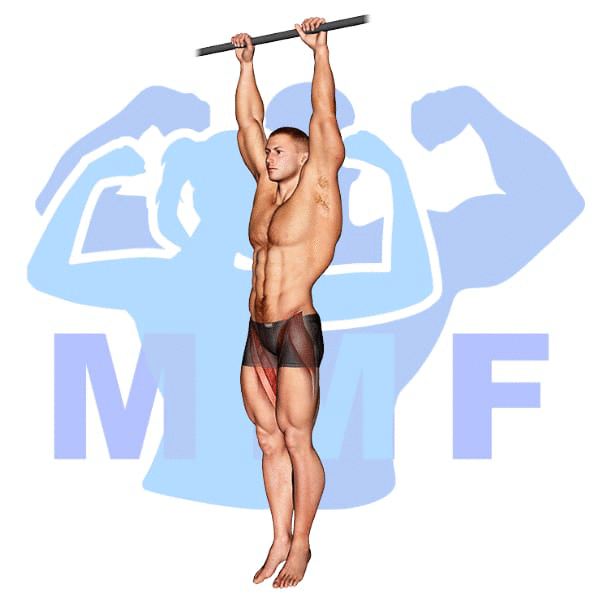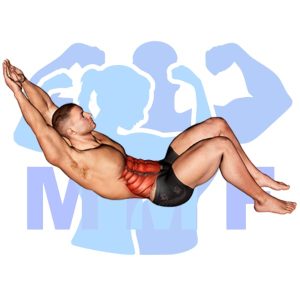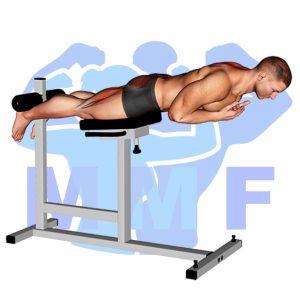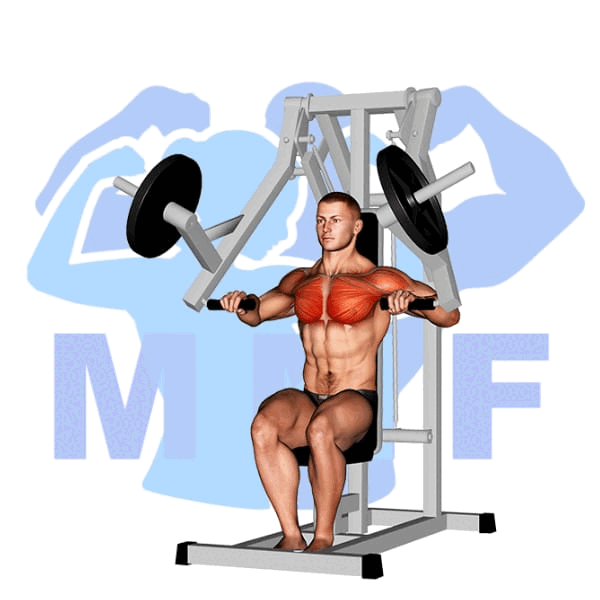Do you struggle with performing hanging leg raises during your workouts? You’re not alone. Many people find this exercise to be challenging, and it can be discouraging to feel like you’re not making progress. It’s important to know that having difficulty with hanging leg raises is common for beginners, and even some experienced fitness enthusiasts. But don’t let that hold you back! In this blog post, we’re going to share some tips and tricks to improve your hanging leg raise form and make this exercise a part of your regular routine. By the end of this post, you’ll feel more confident and motivated to conquer this exercise and achieve your fitness goals.
Hanging Leg Raise Summary
- Primary Muscles: Rectus Abdominis
- Secondary Muscles: Adductor Brevis, Adductor Longus, Iliopsoas (Psoas Major & Iliacus), Obliques, Pectineus, Rectus Femoris, Sartorius, and Tensor Fasciae Latae
- Equipment: Pull Up Bar
- Mechanics Type: Compound
- Force: Pull
- Utility: Basic

Hanging Leg Raise Instructions
- You should begin by finding a pull-up bar where you can hang completely straight without your feet touching the ground and a safe way to reach the bar and get down.
- Once you are hanging, pull your legs up with your abs until your thighs are parallel to the ground.
- Then lower your legs back to the hanging position.
- Repeat the Hanging Leg Raise for 6-10 repetitions.
Video Tutorial
Hanging Leg Raise Muscles
Target (Agonist)
Synergists
- Adductor Brevis
- Adductor Longus
- Iliopsoas (Psoas Major & Iliacus)
- Obliques
- Pectineus
- Rectus Femoris
- Sartorius
- Tensor Fasciae Latae
Dynamic Stabilizers
- Rectus Femoris
Stabilizers
Antagonist Stabilizers
- None

Benefits of Hanging Leg Raise
The hanging leg raise exercise is an excellent way to target the rectus abdominis muscle, which is the large muscle in the front of the abdomen. This exercise not only helps to strengthen and tone the rectus abdominis, but also helps to improve posture and balance by engaging core muscles. Additionally, it can help to reduce lower back pain, as it stretches and strengthens the lower back muscles. Furthermore, it can help to improve overall abdominal strength, as well as stability in the hips and spine. This exercise also helps to increase cardiovascular endurance, as it increases heart rate and breathing rate. All of these benefits make the hanging leg raise an essential exercise for any strength or fitness routine.
Tips for Performing Hanging Leg Raise
Your at the right place if you’re motivated to enhance your hanging leg raise performance. These tips can help you get the most out of this effective workout, and help you reap all the benefits it has to offer. Concurrently with strengthening your abs muscles, increasing mobility, and also a reduced possibility of injury can all be accomplished with this exercise. Let’s get started and look at what these tips can accomplish for you.
- Make sure to use your core and back muscles for the most benefit: Engaging your core and back muscles during the exercise will ensure that you are getting a full body workout and will help you build strength and stability in those areas.
- Make sure to use proper form: Using proper form during the exercise will help you avoid any potential injuries, while also ensuring that you are getting the most out of the exercise.
- Take it slow and focus on your breathing: Taking your time with the exercise, and focusing on your breathing, will help you build up endurance and maximize the benefits of this exercise.
Benefits and Tips Video
Frequent Mistakes To Avoid
Staying away from errors can be the distinction between a successful training session and a painful injury when executing hanging leg raise. Also, in order to maximize the benefits of the exercise, proper form is required. Through preventing these common mistakes, you may improve your ability to achieve your desired results. Not only can preventing these mistakes increase your strength, but also can assist in you feeling more confident and inspired when at in the gym. Then let’s begin on avoiding those typical mistakes and making this exercise a normal part of your fitness routine.
- Not engaging their core muscles: People often try to swing their legs up for momentum, but this can lead to a lack of core muscle activation and reduce the effectiveness of the exercise.
- Not using a full range of motion: People may not lower their legs far enough, which not only reduces the difficulty of the exercise, but also reduces the amount of muscle activation.
- Focusing on speed over form: People may try to do the exercise as quickly as possible without proper form, which can lead to injury and reduce the effectiveness of the exercise.
Find More Bodyweight Exercises Here
Variations and Complementary Exercises
The exercise Hanging Leg Raise is an excellent way to strengthen the core muscles and improve hip and abdominal flexibility. However, if you are looking to switch up your routine, there are several variations, complementary, and alternative exercises that can be done to target similar muscles. Below are a few of these exercises to consider.
Hands Up Crunch

Hands Up Crunch is an alternative exercise to the Hanging Leg Raise that works the same muscle groups in a slightly different way. The exercise requires you to lie on your back with your arms extended up over your head and your legs straight out in front of you. You then curl your upper body up towards your knees, engaging your abs and obliques. This exercise can be modified by bending your knees or by holding a weight in your hands for added resistance. Hands Up Crunch is an effective and safe alternative to the Hanging Leg Raise that can help you develop strong and toned abdominal muscles.
Crunch

Crunch is a great complementary or alternative exercise to the Hanging Leg Raise. It works the same muscles in the core, while also involving the arms and shoulders in the movement. The crunch targets the rectus abdominis, obliques, and hip flexors, while also engaging the upper body. The best part about crunches is that they can be done anywhere, anytime and require no special equipment. They are also great for beginners because they can be done with little to no risk of injury. For those looking to increase difficulty, variations such as weighted crunches and side crunches can be added to the routine.
Tuck Crunch

Tuck Crunch is a great alternative or complementary exercise for the Hanging Leg Raise. It works the same core muscles, but with a different emphasis. With the Tuck Crunch, the legs are bent at the knee and tucked towards the chest. The arms can remain stretched out in front of the body or they can be used to help curl the legs in further. The focus of the Tuck Crunch is to engage the core and abdominal muscles to lift the hips off the ground while maintaining a tucked position. This exercise is great for strengthening the core and improving balance and stability.
Check Out These Top Bodyweight Exercises
Superman Plank

The Superman Plank is an excellent alternative or complementary exercise to the Hanging Leg Raise. It targets many of the same muscles as the Hanging Leg Raise, including the core and hip flexors, while also working your back muscles. To do the Superman Plank, start in a plank position with your arms and legs extended. Lift one arm off the ground and hold for a few seconds. Lower your arm and then repeat with the other arm. Then lift one leg off the ground and hold for a few seconds. Lower your leg and then repeat with the other leg. This exercise will help build strength in your core and back muscles, as well as improve stability and balance.
Sit Up

Sit-ups are a great alternative or complementary exercise to the hanging leg raise. Sit-ups involve raising your upper body off the ground using your abdominal muscles, while the hanging leg raise involves lifting your legs up to the bar. Both exercises work the same core muscles, but the sit-up allows you to use your arms and upper body for assistance, making it a great choice for those just starting out. Sit-ups can also be done in a variety of different positions to target different muscles, allowing you to work on different areas of your core. Additionally, sit-ups can be done without any equipment, making them a great choice for anyone who has limited access to gym equipment.
Reverse Crunches

Reverse Crunches are a great complementary or alternative exercise to the Hanging Leg Raise. This exercise is done by lying on the floor with your knees bent and feet flat. From here, you lift your hips off the ground and crunch your knees towards your chest. This exercise works the lower abs, obliques, and hip flexors, making it a great substitute for the Hanging Leg Raise. Reverse Crunches are a great way to get similar results without the need for additional equipment or support.
Find More Abs Exercises Here
Opposing Complementary Exercises
The Hanging Leg Raise is a great exercise for core strength, but it’s important to also incorporate exercises that use opposing muscle groups. This will help you to create balance and symmetry in your body. By working opposing muscles, you will be able to build muscle and increase strength in the same area. Here are some exercises that complement the Hanging Leg Raise:
Hyperextension

Hyperextension is a complementary exercise to the Hanging Leg Raise, as it engages the opposing muscle group of the lower back. This exercise strengthens the lower back muscles by stretching them and creating resistance against gravity. It also helps to stabilize the spine, which is important for any type of physical activity. By performing hyperextension, you can increase your strength and flexibility in the lower back, which will help you perform the Hanging Leg Raise with better form and with less risk of injury.
Reverse Hyperextension

Reverse Hyperextension is a great complementary exercise to the Hanging Leg Raise as it works the opposing muscle group. This exercise targets the lower back muscles, glutes, and hamstrings, while the Hanging Leg Raise primarily targets the abs, hip flexors, and obliques. Reverse Hyperextension helps to strengthen and stabilize the lower back muscles, improve posture, and reduce the risk of injury. It also helps to prevent imbalances between opposing muscle groups, which can often occur when just one exercise is performed.
Plate Hyperextension

Plate Hyperextension is a great exercise to complement the Hanging Leg Raise, as it targets the opposing muscle group. Plate Hyperextension is an exercise that focuses on strengthening the lower back muscles. By lying on your stomach and positioning a weight plate on your upper back, you can do a back extension with your arms and legs fully extended. This will help you to target your lower back muscles, while the Hanging Leg Raise works the abs and hip flexors. Doing both exercises together will give you an effective full body workout, while also allowing you to focus on opposing muscle groups.
Achieve Your Core Goals with Hanging Leg Raises!
The hanging leg raise is an excellent exercise for building a strong core and improving overall core stability. While it may seem simple, this exercise requires considerable concentration and control to perform correctly. Incorporating hanging leg raises into your workout routine can help you achieve your core goals and improve your overall fitness. Remember to focus on proper form and start with easier variations of the exercise before progressing to more challenging versions. With consistent practice and dedication, you’ll be on your way to achieving a strong and stable core.
References: Wikipedia | ExRx.net | PubMed.gov | Comprehensive List of Abs Bodyweight Exercises




